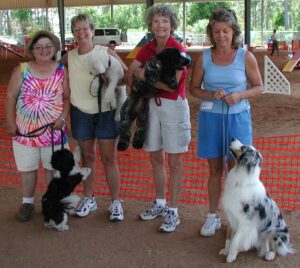Barks Blog
People Skills for Dog Trainers

Being a dog trainer is great. I love training dogs. But, I also love teaching people. Being a dog trainer requires a huge and unique set of skills. First, you must be adept at recognizing and understanding canine behavior. Then, you need to develop the manual skills to teach that non- verbal being to follow your cues and live in a world with vague rules that have no parallel in the canine world.
Once you have mastered the dog communication and training portion, you need to have people skills. Included in this is the ability to relate to your clients, help them practice their manual skills and give them an understanding of canine behavior so they can apply the best choice of learned behaviors to constantly changing stimuli. Dog training is fluid and changes quickly. Human learning is fluid, but it takes time to acquire the knowledge and the physical intuition to cue the dog in each situation. Professional dog training is not a good career choice for those who love animals but dislike human relationships. The two, dog training and teaching humans, go hand in hand.
For many years before I was a dog trainer, I worked in retail sales. I feel my practice in handling the public, learning to be a good listener and remaining calm while finding a solution to a problem in the intensity of the moment helps me tremendously as a dog trainer. The trainer who mentored me had little patience for her clients. I was often appalled at her reactions to her students. I vowed I would not treat people with the same disdain and disrespect. If my goal is to teach the person to train their dog, I can’t do it through alienation. And, while I’m not perfect, I like to think I treat the human element as kindly as the canine part of the team.
If you are a trainer, consider your people skills. Are you clear and concise in your instruction? Do you give your students an opportunity to practice their mechanical skills and develop their own unique technique? Are you too quick to criticize and judge? A client might not give a cue exactly as you do, but does their dog understand them?
I see my part in teaching as opening the pathways of communication between people and their pets. If the dog is understanding and compliant, I have succeeded in my task. My job is not to teach the dog to respond to me at my level of competence, but to help the dog owner achieve a level of ability to meet their needs and their lifestyle.

